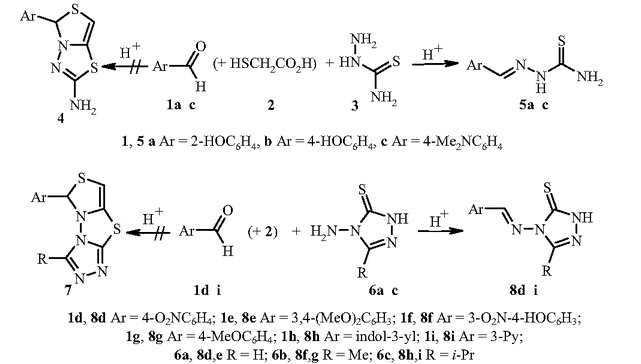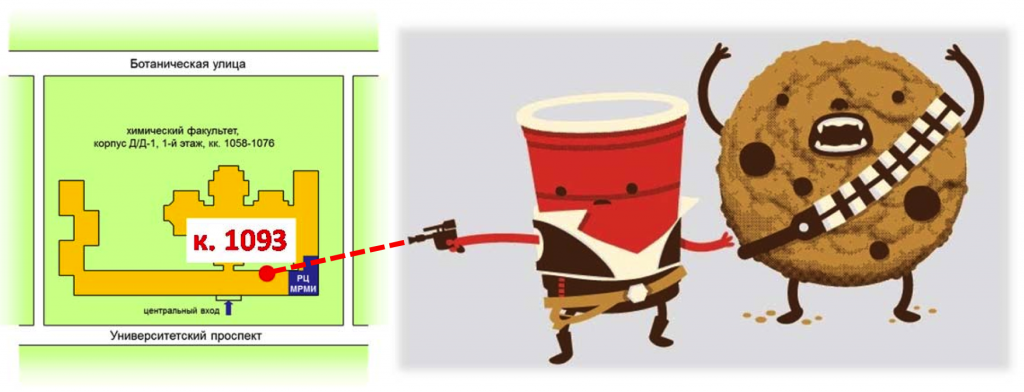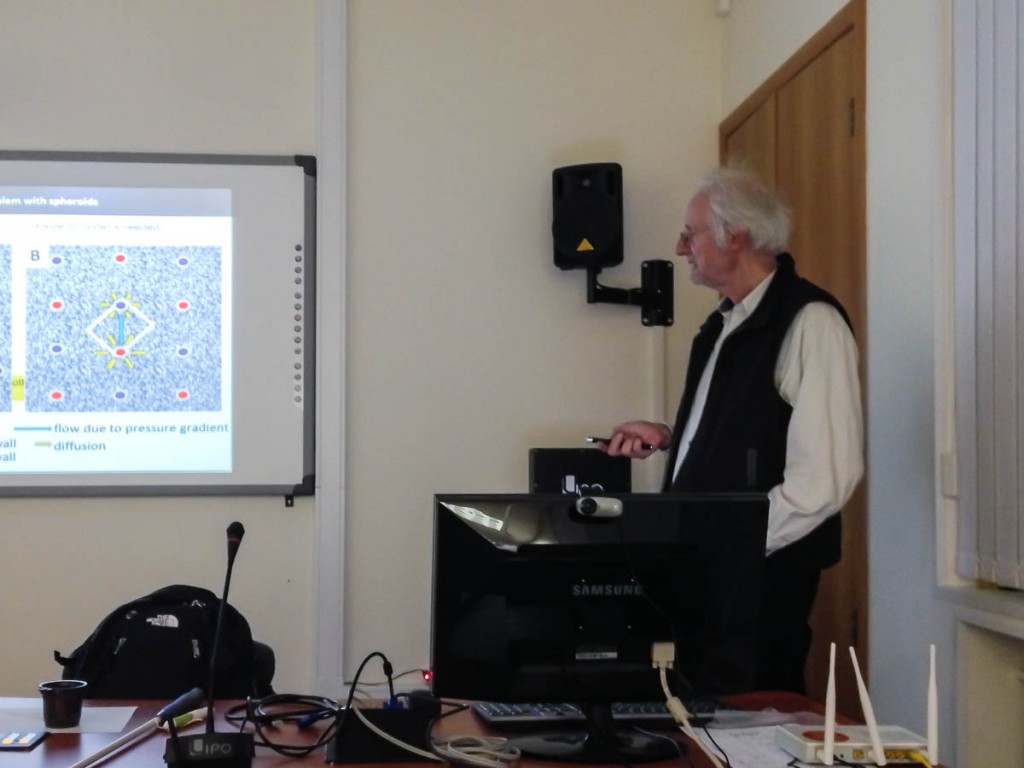
On Wednesday, April 2, 2014 during the conference “Mendeleev-2014” there will take place an open day in our Center. A tour around the Center is scheduled to start at 15:00 to 16:30 for all interested conference participants.
Archive for A. Gurinov
Open Day on April 2
Tetrahedron Letters 2014
Alena S. Pankova, Mikhail A. Kuznetsov
“Synthesis and thermal transformations of spiro-fused N-phthalimidoaziridines”
Tetrahedron Letters, 2014, In Press
DOI: 10.1016/j.tetlet.2014.03.014

Oxidation of N-aminophthalimide in the presence of 2-arylideneinden-1,3-diones with electron-withdrawing substituents gives the corresponding 3-aryl-1-phthalimidospiro[aziridine-2,2’-indene]-1’,3’-diones in good yields. Heating these aziridines with standard dipolarophiles (N-phenylmaleimide, dimethyl acetylenedicarboxylate, maleate and fumarate) leads, in most cases, to spiro[inden-2,2’-pyrrole] derivatives as products of 1,3-dipolar cycloaddition of the intermediate azomethine ylides with up to 70-95% yields in the case of N-phenylmaleimide. As is typical for 2-acylaziridines, the competing rearrangement into 2-aryl-4H-indeno[2,1-d][1,3]oxazol-4-ones prevails for less active dipolarophiles. Increasing the electron-releasing properties of the 3-aryl ring allows the observation of the push-pull effect of electron-donating and electron-withdrawing substituents on the ease of the three-membered ring-opening.
The first lecture of Prof. Gratzl
Prof. Miklos Gratzl gave his first lecture of the two planned. The second lecture will be held a week later, on March 20.
Announcement of lectures was here.
Visiting rectors
Representatives of the Council of Rectors of the North-West Region have visited our Center with an introductory tour. The guests got acquainted with the equipment and learned the principles of Center’s work.
News on the site of the University.
Chemistry of Heterocyclic Compounds
M. A. Kuznetsov, A. Ya. Bespalov
“One-pot, Three-component Synthesis of [1,3]thiazolo[4,3-b][1,3,4]thiadiazoles: Correct Structure of the Products”
Chem. Heterocycl. Compd., 2014, 49, 1458-1463
DOI: 10.1007/s10593-014-1396-4

The products of the one-pot, three-component synthesis of [1,3]thiazolo-[4,3-b][1, 3, 4]thiadiazoles from aromatic aldehydes, thioglycolic acid, and compounds containing a C(=S)–N–NH2 fragment (thiosemicarbazide or 4-amino-2,4-dihydro-3H-1,2,4-triazole-3-thiones) are not condensed hetero-cycles (as reported by several researchers), but are thiosemicarbazones or triazolylimines of the aldehydes used.
Dalton Transactions
Julia R. Shakirova, Elena V. Grachova, Antti J. Karttunen, Vladislav V. Gurzhiy, Sergey P. Tunik and Igor O. Koshevoy
“Metallophilicity-assisted assembly of phosphine-based cage molecules”
Dalton Trans., 2014, Advance Article
DOI: 10.1039/c3dt53645a

A family of supramolecular cage molecules has been obtained via self-assembly of the phosphine–gold coordination complexes following an aurophilicity-driven aggregation approach. Use of the di- (PP) or tridentate (PPP) phosphine ligands Pn (n = 2, 3) with rigid polyaromatic backbones leads to clean formation of the coordination Pn(Au(tht))nn+ species, sequential treatment of which with H2O/NEt3 and excess of H2NBut gives the finite 3D structures of two major types. The cylindrical-like hexametallic cages [(PPAu2)3(μ3-NBut)2]2+ are based on the diphosphines PP = 1,4-bis(diphenylphosphino)benzene (1), 4,4′-bis(diphenylphosphino)biphenyl (2), 4,4′′-bis(diphenylphosphino)terphenyl (3), while the triphosphine PPP (1,3,5-tris(diphenylphosphinophenyl)benzene) produces a tetrahedral dodecagold complex [(PPPAu3)4(μ3-NBut)4]4+ (4). The cages 1–4 have been studied using the ESI-MS and 1H, 31P NMR spectroscopy, and the crystal structures of 1 and 4 were determined by an X-ray diffraction study. The NMR spectroscopic investigations showed that cylindrical complexes 1–3 undergo twisting-like interconversion of the helical P↔M isomers in solution, while 4 is a stereochemically rigid compound retaining its axially chiral architecture. The difference in dynamic behaviour was rationalized using computational studies with density functional methods.
Announcing seminars on March 13th and 20th, 2014
Within the multidisciplinary seminars conducted by our Center, on March 13th and 20th there will be a lecture by Professor Miklos Gratzl of the Case Western Reserve University, USA, united by a common theme «Experimental approaches to study cellular and multicellular drug transport in cancer cells».
In this sequence of talks mechanisms of drug transport at single cells and in 3D multicellular constructs will be briefly reviewed. Experimental approaches to study some of these processes will then be presented in more detail. At the cellular level, drug delivery into single cells via passive and forced uptake and associated processes will be discussed. At the multicellular level, drug penetration, modulation of therapeutic efficacy by local hypoxia and acidification, and distribution of cell kill will be outlined based on the spheroid model, the microfluidic approach, and a new physical model of the capillary microenvironment. Movement of a classical small drug molecule and a plant‐ derived viral nano‐delivery vehicle will be discussed in these contexts.
Seminars will take place at 12:00 in room 1093 of the Chemical Faculty. There will be some tea, coffee and cookies. The lectures will be in English.

Talk on 5th of March
On the 5th of March at a Scientific Seminar of master students of the Faculty of Chemistry Peter Tolstoy gave a talk “Research of a cooperativity of hydrogen bonds in active sites of enzymes on model systems using NMR spectroscopy.”
Timetable during March holidays
On Friday, March 7, we have shortened working day and on Monday, March 10 the Center is not working.
February 2014
Total in February 1076 service applications were carried out.
All together measured:
- 1026 1H spectra
- 214 13C spectra
- 102 DEPT spectra
- 5 COSY spectra
- 8 NOESY spectra
- 97 31P spectra
- 55 19F spectra
81 applications were carried out which jointly took 1511 hours of measurements.
